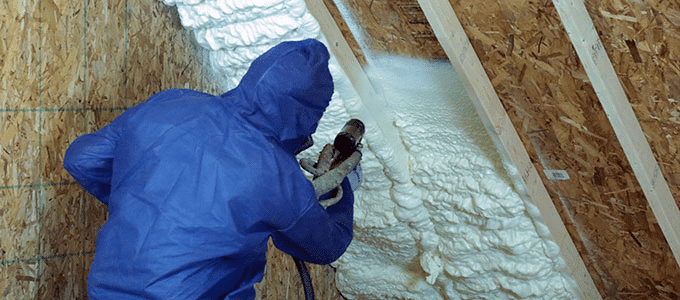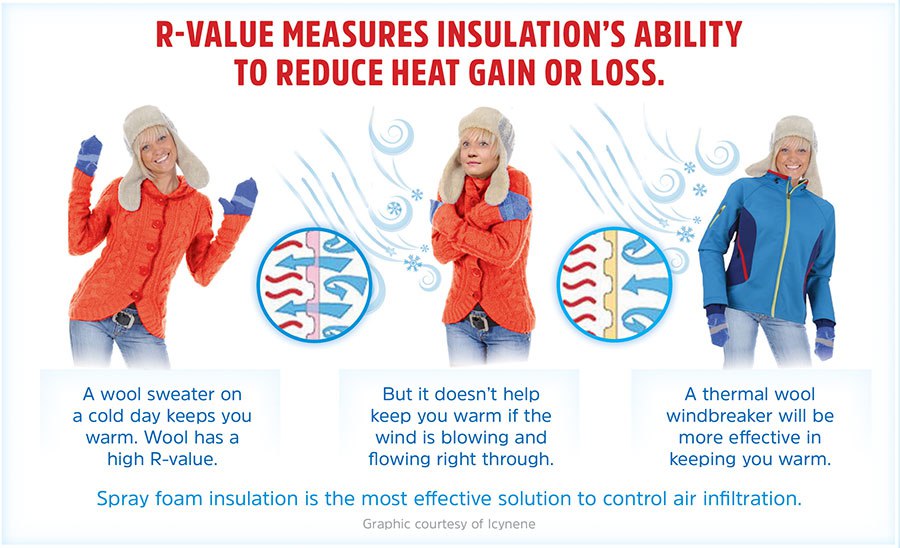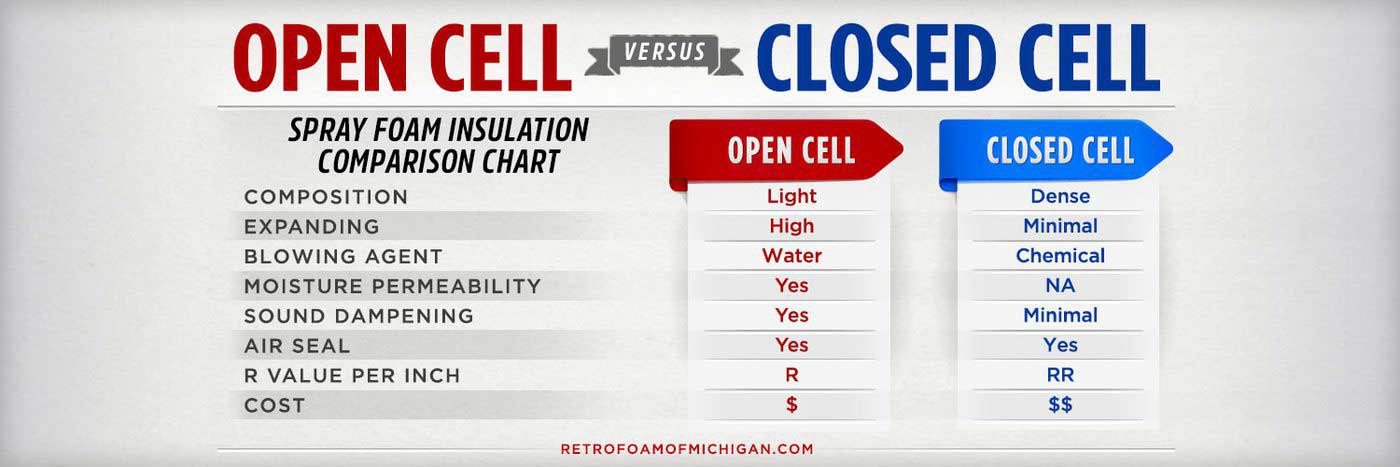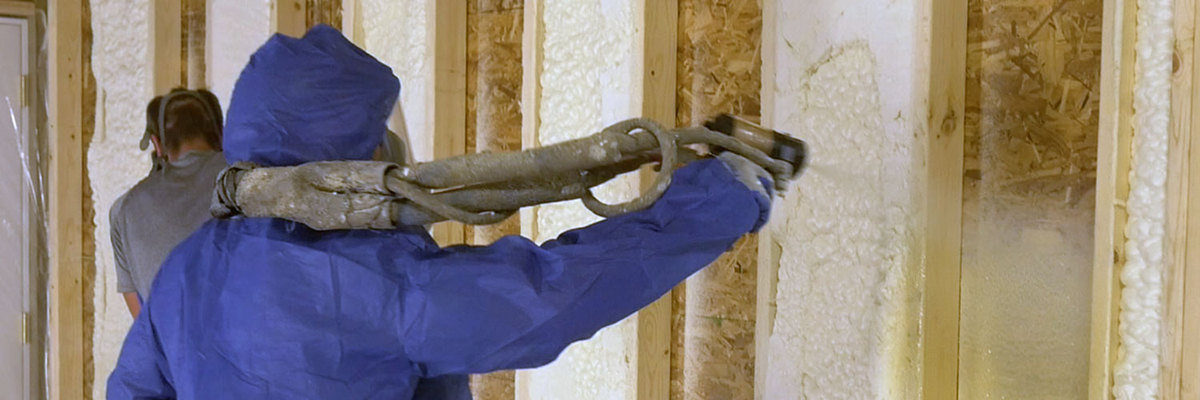What is Spray Foam Insulation? What it’s Made of, How it Works, & More


As you have been researching insulation choices for your project, you have probably come across many different types of insulation including, fiberglass, cellulose, and spray foam.
You have heard about spray foam, but you aren’t too familiar with it or how exactly it works.
Icynene-Lapolla spray foam is a newer type of insulation that has been around since 1986.
Many newer homes are being insulated with spray foam for their energy efficiency and comfort benefits.
At the same time, homeowners of existing homes are deciding to retrofit their attics, walls, and crawl spaces with spray foam to fix uncomfortable room issues and save money on monthly energy bills.
Spray foam is also an excellent option for pole barns.
RetroFoam of Michigan has more than 17 years of experience insulating thousands of homes in the lower peninsula, and now the greater Toledo area, so we know a lot about spray foam and the benefits of insulating your home with it.
In this article, we will explain exactly what spray foam insulation is, what it's made of, how it works, and a lot more. So, sit back, relax, and let's learn about all things spray foam insulation.
What is Spray Foam Insulation?
Spray foam insulation is an insulation and air barrier material that seals walls, floors, and ceiling cavities against air movement.
This includes spaces around electrical outlets and light fixtures, and also where walls meet windows and doors.
Spray foam can be sprayed into an open cavity, like in new construction, attics, crawl spaces, and rim joists. It can also be used in existing homes, commercial buildings, and pole barns. As long as the cavities are open and there is access, then the spray foam can be applied.
Spray foam never loses its shape. Unlike conventional insulation materials, spray foam fills cracks, gaps, and crevices on installation. It won’t compress, sag, or settle over time.
Why Use Spray Foam Insulation?
There are a lot of reasons to update your insulation, but why make the choice to use spray foam insulation?
There are several reasons why spray foam insulation is a premium product that homeowners choose and that decision is usually based on the materials benefits.
If you're experiencing high energy bills year-round because your home can't maintain a constant temperature, then the air seal created by spray foam can help. This seals the building envelope when used throughout the home, so air can't leak into your home and it also can't leak out.
Air sealing your home stops the air leaks, which means your furnace and air conditioner won't be running constantly. This will end up saving you money on your monthly energy bills.
The air seal created by spray foam also stops drafts from getting into your home. Any place where air can leak in, it will. The way spray works it gets into every nook and cranny so it prevents that air movement.
Another issue people notice that spray foam can remedy is condensation on the walls.
When there is a big temperature difference from the outside to the inside of the home, when those two temperatures meet condensation is formed. This happens in walls with little to no insulation coverage.
This is another scenario where the air seal created by foam insulation can help stop that condensation from forming. The condensation can't form because the foam has created a barrier so the outside air and inside treated air can't meet.
A big issues homeowners face are ice dams in the winter.
Ice dams form when water freezes on the roof and the heat loss coming from the attic melts it, so it runs down the roof creating ice damming at the end of the roof at the gutters.
Here is a case where the air seal created by spray foam insulation in the attic will prevent the ice dams. The treated air in your home circulates heading up to the attic space. Insulating the roof deck of the attic prevents this warm air from escaping out through the roof.
Preventing that air movement works to in turn prevent the ice dams.
How Does Spray Foam Insulation Work?
 Open cell and closed cell spray foam insulate your home while creating an air seal.
Open cell and closed cell spray foam insulate your home while creating an air seal.
The insulation has many benefits including, sound dampening qualities, deterring mold growth, and reducing airflow while stopping drafts and cold floors. It also can help lower your monthly energy bills.
Spray foam insulation impacts the conduction (heat transfer) and the convection (airflow), which affects your home’s comfort and energy efficiency. Insulation’s overall job is to resist heat flow in or out of a space. It keeps your warm house warm in the winter and your cool home cool in the summer.
When thinking of traditional insulation – fiberglass and cellulose – think of it like the comparison of a wool sweater and a windbreaker.
A wool sweater on a cold fall day is warm and welcome. That same wool sweater doesn’t help you keep warm if the wind is blowing and flowing right through it. A windbreaker will be much more effective in keeping you warm, much like spray foam.
Air leakage is a problem for many homes and this contributes to the home’s energy loss as well as the discomforts of drafts, cold floors, and ice dams. Some homes can leak enough air each day to fill two blimps, so imagine the impact that has on heating and cooling bills.
Some open cell spray foam insulation expands up to 100 times its original size to fill every nook and cranny in the cavity avoiding any air leakage. With traditional insulation – fiberglass and cellulose – spaces and gaps that aren’t filled can leak air.
Using spray foam can lead to a draft-free and energy-efficient home.
What Is the Difference Between Open Cell and Closed Cell Spray Foam Insulation?
 Spray foam can be either open cell or closed cell foam insulation.
Spray foam can be either open cell or closed cell foam insulation.
While both materials create an air seal, there are some differences between them that can make a difference for your project. Let's take a look.
Open Cell Spray Foam Insulation
Open cell spray foam insulation is spray-applied to open cavities in any structure.
Open cell creates an air seal and continuous insulation in the existing home, new home, or pole barn. This spray foam insulation is light, pliable, and can expand up to 100 times to fill every nook and cranny where it is installed.
Here are a few of the things that open cell spray foam has to offer.
- Open cell tends to be cheaper than closed cell, but still provides the same air seal you're looking for.
- As your home shifts and settles, open cell will move with the structure without cracking or pulling away from the studs.
- Open cell allows water to move through it but doesn't soak it up and retain it like a sponge. When it becomes wet, it will dry out while not promoting the growth of mold and mildew.
- If you're looking to reduce the noise coming into your home, open cell spray foam does help with sound dampening. It won't completely soundproof your home, but it can help reduce the sound that comes in.
- Water is the blowing agent for open cell spray foam.
Closed Cell Spray Foam Insulation
Closed cell spray foam insulation is a spray-applied plastic that creates an air seal and a continuous insulation.
Closed cell spray foam is applied to the open cavities of existing homes, new homes, pole barns, and commercial buildings. While we don't usually recommend closed cell for homes, there are instances where it is the better fit over open cell, especially if the structure has limited space.
Closed cell is more commonly used in pole barns, commercial structures, and vans.
Here are the benefits of closed cell spray foam.
- Closed cell spray foam is durable, so it can be left exposed without worrying about damaging the foam.
- Water is not able to pass through closed cell spray foam, but that doesn't mean it should be used to fix any leaks that may be present.
- Just like open cell, it limits air leakage where it is installed.
- Because closed cell spray foam doesn't have a high expansion rate, this makes it a great fit for smaller projects like cargo vans and tiny homes.
RELATED: Open Cell vs Closed Cell Foam Insulation: Which is Better for My Home?
What is Spray Foam Insulation Made of?
When most spray foams are made, two liquids combine, causing a chemical reaction to form the spray polyurethane foam. The two liquids come in different drums or containers. Contractors usually refer to one container as the “A” side and the other container as the “B” side, according to the website Spraypolyurethane.org.
The “A” side of a spray polyurethane system is usually made up of methylene diphenyl diisocyanate (MDI) and polymeric methylene diphenyl diisocyanate (pMDI).
The “B” side is typically a blend of polyols, catalysts, blowing agent, flame retardant, and surfactants, according to the website.
When the “B” side is introduced to the “A” side, there is a reaction creating foam.
The “A” side and the “B” side are both proprietary to each spray foam manufacturer. Most “A” sides will share components, but each manufacturer will have its own proprietary blend.
Icynene-Lapolla spray foam insulation’s main ingredients are water-blown and organic chemical compounds derived from petroleum extracts. The spray foam is environmentally safe, Class One Fire Rated, and doesn’t retain water.
With that being said, it's important to note that every spray foam manufacturer will be different in the materials they use and what that company uses as a blowing agent. This is why it's always important to check with your foam insulation contractor on the products they plan to use and get information on that specific material.
The cost of spray foam insulation will also differ from manufacturer to manufacturer and even contractor to contractor.
Is Spray Foam Insulation Safe to Have in My Home?
If you're researching spray foam insulation, then you've likely read horror stories about off-gassing and high VOCs, or volatile organic compounds. This really just leaves you wondering if spray foam is safe to have installed in your house.
Like we said above, not all spray foam are made the same and also aren't of the same quality. It's always very important to make sure you're well versed in the material your contractor plans to use.
Spray foam insulation does off-gas, but the amount varies from product to product. There are health concerns around off-gassing and odor, but only when it happens in large amounts. This is why when you're doing your research into spray foam insulation you should look for materials that are labeled "low-VOC."
Low-VOC spray foam has a minimal amount of off-gassing and has a lower re-occupancy time of around 2 hours.
What is the Process of Installing Spray Foam Insulation?
 After you receive a quote from the contractor and you’re ready for the installation to begin, the first part of the job will start when a crew comes to your home and removes any existing insulation from the area that is to be insulated.
After you receive a quote from the contractor and you’re ready for the installation to begin, the first part of the job will start when a crew comes to your home and removes any existing insulation from the area that is to be insulated.
If this is a new build home, pole barn, or commercial structure, then there won't be any removal needed.
The day of the installation, crews will need to prep the area where the foam is going to be sprayed. The kind of preparation all depends on where the foam is being applied. If the basement rim joist is being sprayed and there are items down there, then the crew would make sure that if those pieces weren't moved beforehand that they are moved to the center of the room. Those items would also be covered with plastic as another precaution.
Once all of the prep work is done, the crew will run a hose to the area to be insulated – the attic, crawl space, rim joist in an existing home. Uncovered walls in new construction and pole barns can also be sprayed with foam insulation, as well as concrete block walls.
You'll see the trucks and trailers and that's really where the magic happens. With the larger, high-end rigs it's impossible to mix and spray bad foam. The tech inside the rig ensures the foam is mixed perfectly every time, and that the foam is the correct temperature no matter what the temperature is outside.
Once everything has been sprayed, the crew cleans up the area so that it looks just like it did before the job was started.
How Does Spray Foam Insulation Affect a Home’s Energy Cost?
Air leakage can account for as much as 40 percent of the energy cost to heat and cool your home, according to the Department of Energy. That is the equivalent of leaving a window open 24 hours a day, all year long.
Only spray foam insulation protects against the single biggest source of heat flow – air leakage – because it forms an effective air barrier.
Getting Started with a Free Estimate
Now that you’ve learned about spray foam insulation, you may have decided it is best for your home.
If you live in Michigan’s lower peninsula or the greater Toledo area and are ready to schedule a free in-home estimate, give us a call at 866-900-3626, or fill out the form on our website. You can also check out our budget calculator to provide you with a rough idea of the cost to insulate your home.
Related Articles
Clearing Up Misconceptions about Spray Foam Insulation
Injection Foam Insulation vs Spray Foam Insulation: What's the Difference?
Low-Pressure vs High-Pressure Spray Foam: What's the Difference?
Save
Save
About Amanda Ringler
Amanda previously has worked as a breaking news and crime reporter, TV news producer, and editor in Flint and Detroit. Throughout her career as a journalist, she has won several awards from The Society of Professional Journalists - Detroit Chapter and the Michigan Press Association. As part of the RetroFoam of Michigan family, Amanda uses her experience as a journalist to write content that will help educate homeowners on the benefits of foam insulation. When Amanda isn’t writing, she’s spending time with her husband and rescued huskies. She also loves knitting, making art, cooking, and hosting dinner and a movie night for friends and family.

.jpg)
